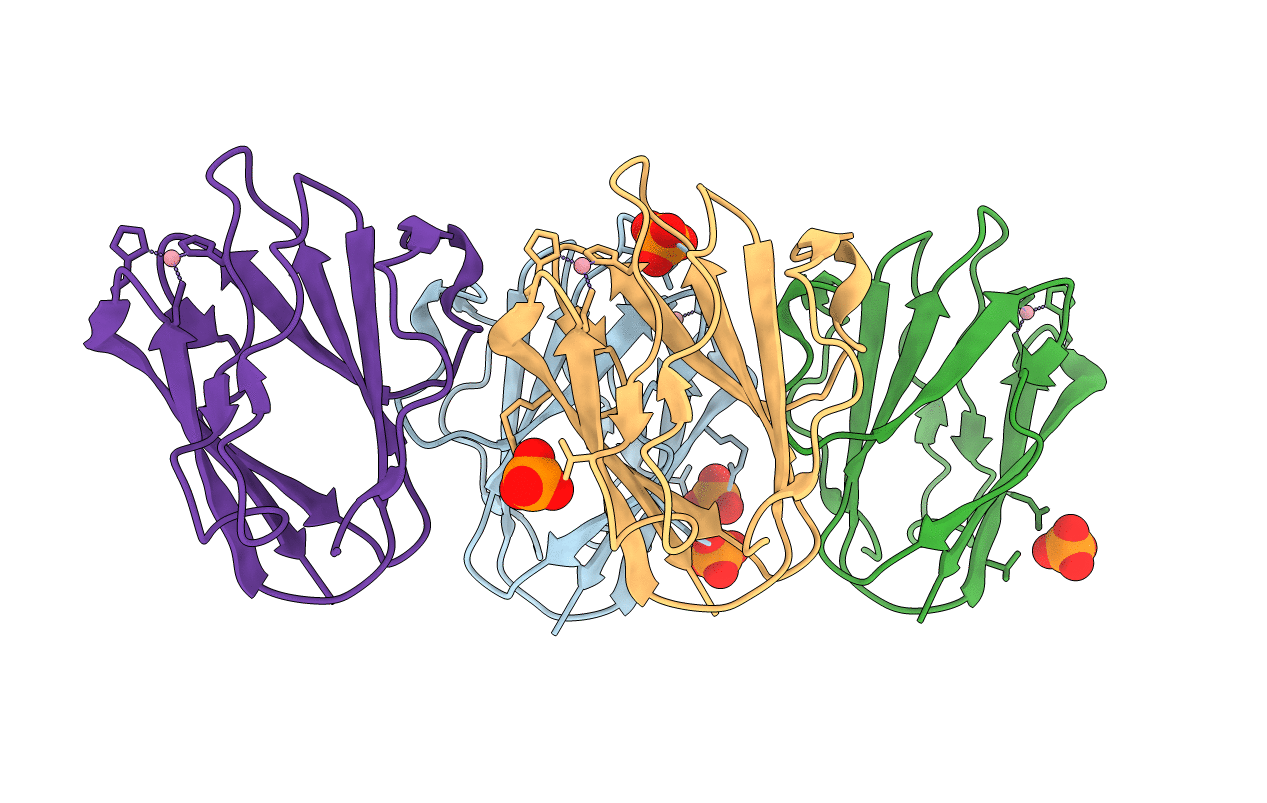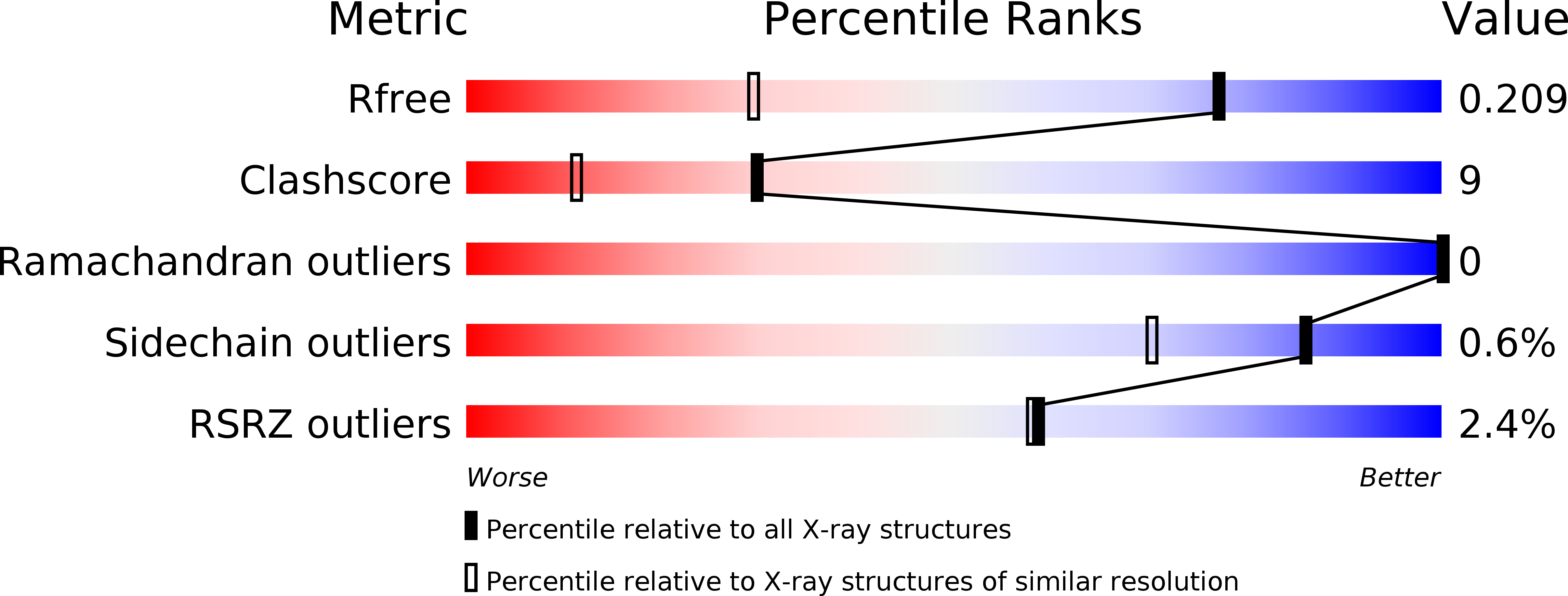
Deposition Date
2004-05-04
Release Date
2004-07-27
Last Version Date
2024-02-14
Entry Detail
PDB ID:
1T5K
Keywords:
Title:
Crystal structure of amicyanin substituted with cobalt
Biological Source:
Source Organism:
Paracoccus denitrificans (Taxon ID: 266)
Host Organism:
Method Details:
Experimental Method:
Resolution:
1.40 Å
R-Value Free:
0.21
R-Value Work:
0.18
R-Value Observed:
0.18
Space Group:
P 1 21 1


